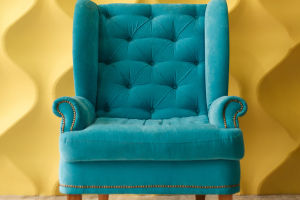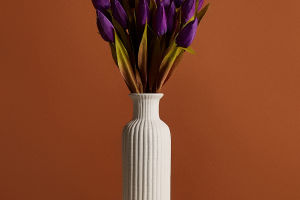Placing fresh flowers indoors not only enhances the aesthetic appeal of your home but also improves the air quality and atmosphere.
Here, we explore seven aspects of how to effectively place fresh flowers indoors to achieve the best decorative effect and living experience.
1. Choosing the Right Flower Types
Different types of flowers have varying characteristics and adaptability, so choosing the right flowers is crucial. Generally, indoor flowers should not require high levels of light and temperature.
Examples include orchids, lilies, tulips, and chrysanthemums. These flowers are not only beautiful but also adapt well to indoor environments and have a longer lifespan. Additionally, you can change the types of flowers according to the season to keep your indoor flowers fresh and vibrant.
2. Selecting Vases and Containers
The choice of vases and containers significantly impacts the display of flowers. Transparent glass vases can showcase the overall beauty of flowers, including the stems, and are suitable for tall flowers like lilies or roses. Ceramic or metal vases are better for shorter, larger-headed flowers like peonies or sunflowers.
When selecting vases, also consider their coordination with your overall interior decor. For example, minimalist rooms can be paired with simple-lined vases, while classical-style rooms are suitable for more ornate vases.
3. Choosing the Placement
The placement of flowers directly affects their visual appeal and their enhancement of the indoor environment. When choosing a placement, consider the following factors:
Light: Most flowers need moderate light, so place them near windows where the light is bright but not direct. Avoid direct sunlight to prevent premature wilting.
Air Circulation: Good air circulation helps keep flowers fresh. Place them in well-ventilated areas like living rooms or balconies.
Viewing Angle: Flowers should be placed where they are easily visible, such as on dining tables, coffee tables, or desks, to maximize their decorative effect.
4. Matching and Combining Flowers
To achieve better decorative effects, try matching and combining different types of flowers. Color matching is key; pay attention to color harmony and layering.
For example, you can choose flowers of the same color family in different shades to create a gradient effect, or you can opt for complementary colors to increase visual impact. Additionally, consider the shapes and sizes of flowers. Select flowers with varying forms and stem lengths to create a dynamic and layered look.
5. Daily Care and Maintenance
To keep flowers looking beautiful for longer, daily care and maintenance are essential. Here are some basic care methods:
Water Changing: Regularly change the water in the vase every 2-3 days to keep it clean and prevent bacterial growth.
Trimming: Trim the bottom of the stems each time you change the water to increase the water absorption area. Use sharp scissors and cut at an angle.
Nutrition: Add a special floral nutrient solution to the water to extend the blooming period.
Pest Control: Regularly check for pests and diseases. If found, deal with them promptly.
6. Creative and Personalized Decorations
Incorporate creative and personalized elements when placing flowers to make them more unique and expressive.
For example, use irregularly shaped vases or combine flowers with other decorative items like shells, small stones, or feathers to create a unique decor style. You can also choose specific flowers and decorations according to holidays or special occasions, such as using red roses and heart-shaped decorations for Valentine's Day.
7. Basic Principles of Floral Design
Understanding some basic principles of floral design can help you better place and arrange flowers. Here are a few key principles:
Symmetry and Balance: Ensure the overall shape is symmetrical and balanced, avoiding one side being too heavy or cluttered.
Layering and Rhythm: Create a sense of layering and rhythm by combining flowers of different heights and shapes, making the overall arrangement more lively and interesting.
Focal Point and Supporting Elements: Choose one or two types of flowers as the main focal point, with other flowers acting as supporting elements to create a clear primary and secondary layout.
Conclusion
Placing fresh flowers indoors is a fun yet challenging art activity.
By selecting the right types of flowers and vases, determining suitable placement, matching and combining colors and shapes, paying attention to daily care and maintenance, incorporating creative and personalized elements, and following basic floral design principles, you can transform your home environment, making it vibrant and aesthetically pleasing.
These suggestions aim to help you achieve better results when placing fresh flowers indoors, making your living space warmer and more enjoyable.


